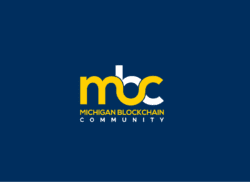10 Essential Steps To Upskilling Your Blockchain Development Teams

Blockchain development is the process of creating and implementing blockchain-based applications and solutions. Blockchain is a decentralized and distributed ledger technology that enables secure and transparent transactions and data management. It gained popularity primarily due to its association with cryptocurrencies like Bitcoin, but its potential goes far beyond that.
The development of a blockchain application involves several key aspects, including defining the use case, designing the architecture, writing smart contracts or decentralized applications (DApps), and deploying the blockchain network.
1. Use Case Definition:
The first step in blockchain development is identifying the specific problem or use case that can benefit from the technology. This could range from supply chain management, financial transactions, healthcare records, voting systems, to decentralized applications for various industries. Understanding the requirements and objectives is crucial for building a successful blockchain solution.
2. Blockchain Architecture Design:
Once the use case is defined, the next step is to design the blockchain architecture. This includes determining the type of blockchain (public, private, or consortium), consensus mechanism (Proof-of-Work, Proof-of-Stake, etc.), data structure, and the rules for validating and storing transactions. Choosing the appropriate blockchain platform, such as Ethereum, Hyperledger Fabric, or Corda, depends on the specific requirements of the project.
3. Smart Contract or DApp Development:
Smart contracts are self-executing contracts with the terms of the agreement directly written into code. They automate the execution of transactions or other actions on the blockchain when certain predefined conditions are met. Smart contracts are typically developed using programming languages specific to the blockchain platform, such as Solidity for Ethereum or Chaincode for Hyperledger Fabric. For decentralized applications, developers use frameworks like Truffle or Embark to build front-end interfaces and interact with the blockchain backend.
4. Blockchain Integration and Testing:
After the development of smart contracts or DApps, they need to be integrated into the blockchain network. This involves deploying the smart contracts on the chosen blockchain platform and connecting them to the frontend interfaces or applications. It’s essential to thoroughly test the application to ensure its security, efficiency, and proper functioning under different scenarios. Various testing frameworks and tools, such as Truffle, Ganache, or Hyperledger Caliper, can be used to test the blockchain application.
5. Deployment and Maintenance:
Once the testing phase is completed, the blockchain application is ready for deployment. Depending on the chosen blockchain platform, deployment can involve deploying the application on public blockchain networks like Ethereum or launching a private blockchain network for specific use within an organization. Maintenance of the blockchain network includes monitoring its performance, applying necessary upgrades or bug fixes, and ensuring the security of the network.
6. Consensus and Governance:
Consensus mechanisms play a critical role in blockchain networks as they determine how transactions are validated and added to the blockchain. Depending on the chosen consensus algorithm, such as Proof-of-Work (PoW), Proof-of-Stake (PoS), or Delegated Proof-of-Stake (DPoS), developers need to configure the network accordingly. Additionally, defining governance models and establishing rules for network participants and decision-making processes is crucial for the long-term sustainability of the blockchain application.
7. Security and Scalability:
Blockchain applications need robust security measures to protect against attacks and ensure data integrity. Implementing encryption, access control, and secure key management practices are essential. Scalability is another crucial aspect to consider, as blockchain networks can face limitations in transaction processing speed and capacity. Solutions like sharding, sidechains, or layer 2 protocols are often implemented to enhance scalability without compromising security.
Blockchain development requires a solid understanding of distributed systems, cryptography, programming languages, and the underlying blockchain platforms. Additionally, developers need to stay updated with the latest advancements and best practices in the blockchain space, as the technology continues to evolve rapidly.
Overall, blockchain development offers the potential to revolutionize various industries by providing secure, transparent, and decentralized solutions. It can streamline processes, eliminate intermediaries, and enable trust among participants in a network.
🔲 The LayerZero Ecosystem plays a vital role in shaping the underlying infrastructure and protocols that support blockchain networks. It addresses core challenges related to consensus, networking, scalability, security, and development tools, ultimately enabling the growth and… pic.twitter.com/T2tXTZYrHz
— 💡 SMART LIQUIDITY (@_SmartLiquidity) June 17, 2023
Why should Businesses Invest in Blockchain Training for Teams
Investing in blockchain training for teams can provide numerous benefits for businesses. Here are several reasons why it is advantageous to invest in blockchain training:
1. Understanding the Technology: Blockchain is a complex and specialized technology. By providing blockchain training to your teams, you equip them with a deep understanding of how blockchain works, its underlying principles, and its potential applications. This knowledge enables teams to identify opportunities where blockchain can add value to your business processes or create innovative solutions.
2. Identifying Use Cases: Blockchain has the potential to disrupt various industries and transform business models. Investing in blockchain training helps teams recognize the specific use cases where blockchain can be implemented effectively. This understanding allows businesses to explore new avenues, streamline existing processes, enhance transparency, and create decentralized solutions.
3. Improved Decision-Making: With blockchain training, teams can make informed decisions regarding the adoption or integration of blockchain technology within your organization. They can evaluate the benefits, risks, and potential impact on existing systems, data security, and compliance requirements. This knowledge empowers teams to make strategic choices that align with your business objectives.
4. Developing Blockchain Solutions: Investing in blockchain training enables your teams to develop blockchain-based solutions in-house. This eliminates the need to rely solely on external blockchain developers or consultants, reducing costs and increasing flexibility. Teams can design and develop smart contracts, decentralized applications (DApps), or integrate existing systems with blockchain networks, tailored to your specific requirements.
5. Enhancing Security: Blockchain technology provides inherent security features such as immutability, encryption, and distributed consensus. By training your teams in blockchain, they gain an understanding of these security mechanisms and best practices for securing blockchain networks. This knowledge can be applied to enhance the security of existing systems and data, protect against fraud, and mitigate risks associated with cyber threats.
6. Keeping Pace with Industry Trends: Blockchain technology is evolving rapidly, with new platforms, frameworks, and protocols being developed regularly. By investing in blockchain training, your teams stay up-to-date with the latest advancements in the field. They can learn about emerging trends, explore new blockchain platforms or consensus mechanisms, and understand how to leverage these developments to gain a competitive edge in your industry.
7. Promoting Innovation and Collaboration: Blockchain training fosters a culture of innovation within your organization. It encourages teams to think creatively and explore novel solutions to business challenges. Moreover, by training multiple teams across departments, you facilitate cross-functional collaboration. This multidisciplinary approach can lead to the development of innovative blockchain applications that leverage the expertise of various teams.
8. Attracting and Retaining Talent: Blockchain is a rapidly growing field, and skilled blockchain professionals are in high demand. By investing in blockchain training, you demonstrate your commitment to staying at the forefront of technological advancements. This can help attract top talent who are passionate about working with blockchain. Additionally, providing training opportunities enhances employee satisfaction, engagement, and loyalty, contributing to employee retention.
9. Partnering and Collaboration Opportunities: Investing in blockchain training can open doors for partnerships and collaboration opportunities with other businesses or blockchain-focused organizations. It positions your company as a knowledgeable and forward-thinking entity, capable of leveraging blockchain technology effectively. Such partnerships can lead to joint initiatives, shared resources, and access to a broader blockchain ecosystem.
In summary, investing in blockchain training for teams equips your organization with the knowledge and skills required to understand, leverage, and implement blockchain technology effectively. It enables you to capitalize on the benefits of blockchain, drive innovation, enhance security, and maintain a competitive edge in an increasingly blockchain-driven world.
Also read: Top 10 Reliable Blockchain Development Companies In Dubai In 2022
Why is Upskilling Essential for Blockchain Development
Upskilling is essential for blockchain development due to the following reasons:
1. Evolving Technology: Blockchain technology is constantly evolving, with new platforms, protocols, and tools being introduced regularly. By upskilling, blockchain developers can stay abreast of the latest advancements, trends, and best practices in the field. This ensures that they can leverage the most up-to-date technologies and techniques to develop efficient and secure blockchain applications.
2. In-Demand Skill Set: Blockchain development skills are highly sought after in the job market. Upskilling in blockchain equips developers with a valuable skill set that is in high demand. This increases their employability and opens up new career opportunities, whether within the current organization or in the broader blockchain industry.
3. Expanding Use Cases: Blockchain technology is being adopted in various industries beyond cryptocurrencies. From supply chain management and healthcare to finance and voting systems, the potential use cases for blockchain are vast. Upskilling in blockchain development allows professionals to understand and explore these diverse applications, enabling them to adapt to changing industry needs and contribute to innovative projects.
4. Bridging the Skill Gap: There is currently a shortage of skilled blockchain developers in the industry. By upskilling existing developers, businesses can bridge this skill gap without relying solely on external talent acquisition. This saves time and resources while ensuring that the organization has a team with the necessary expertise to handle blockchain projects effectively.
5. Building Internal Competence: Upskilling in blockchain development allows organizations to build internal competence and expertise in-house. Instead of outsourcing blockchain projects, businesses can develop a capable team that understands the intricacies of blockchain technology and can create customized solutions specific to the organization’s needs. This enhances the organization’s self-sufficiency and reduces dependency on external resources.
6. Innovation and Competitive Advantage: Upskilling in blockchain empowers developers to think innovatively and explore new possibilities for applying the technology to solve complex problems. By acquiring a deeper understanding of blockchain concepts, developers can contribute to the development of cutting-edge blockchain applications, differentiate their organization in the market, and gain a competitive advantage.
7. Integration with Existing Systems: Many businesses have established systems and processes that need to be integrated with blockchain technology. Upskilling in blockchain development allows developers to understand the nuances of integrating existing systems with blockchain networks effectively. This ensures smooth interoperability, data synchronization, and compatibility between legacy systems and blockchain solutions.
8. Security and Risk Mitigation: Blockchain technology offers inherent security features such as immutability, encryption, and decentralized consensus. However, developing secure blockchain applications requires specialized knowledge and skills. Upskilling in blockchain development equips professionals with the necessary expertise to implement robust security measures, identify vulnerabilities, and mitigate risks associated with blockchain implementations.
9. Collaboration and Interdisciplinary Projects: Blockchain projects often require collaboration between various stakeholders, including developers, business analysts, legal experts, and domain specialists. Upskilling in blockchain development facilitates effective communication and collaboration among team members with diverse backgrounds. It enables developers to understand the requirements and constraints of other disciplines, leading to more efficient and holistic blockchain solutions.
In conclusion, upskilling in blockchain development is crucial to keep pace with the evolving technology, leverage emerging opportunities, bridge the skill gap, foster innovation, enhance security, and gain a competitive edge. By investing in upskilling, organizations can develop a competent and versatile workforce capable of successfully implementing blockchain projects and driving business growth in the digital era.
Also read: Learn and Master Blockchain Development in Two Weeks
Top 10 Essential Steps To Upskilling Your Blockchain Development Teams
Blockchain technology is rapidly evolving, and businesses that want to stay ahead of the curve need to upskill their development teams. Here are 10 essential steps to take:
- Identify your needs. What skills do your developers need to be proficient in blockchain development? Do they need to learn new programming languages, such as Solidity or C++? Do they need to learn about different consensus algorithms? Once you know your needs, you can start to develop a training plan.

- Provide training. There are a number of ways to provide training for your developers. You can hire an external trainer, bring in a consultant, or create your own training materials. The best approach will vary depending on your budget and needs.
- Create a culture of learning. It’s important to create a culture of learning within your organization. Encourage your developers to read books, attend conferences, and take online courses. The more they learn, the more valuable they will be to your team.
- Get involved in the community. There are a number of blockchain communities that you can get involved in. These communities can be a great resource for learning about new trends and technologies. You can also find mentors and collaborators in these communities.

- Use the right tools. There are a number of tools that can help your developers build blockchain applications. Some of these tools include Ethereum, Hyperledger Fabric, and Corda. Choosing the right tools can make a big difference in the success of your development projects.

- Test your applications. It’s important to test your blockchain applications thoroughly before deploying them to production. There are a number of tools that can help you test your applications, such as SmartPy and Truffle.

- Deploy your applications. Once your applications are tested and ready, you can deploy them to production. There are a number of ways to deploy blockchain applications, such as Amazon Web Services (AWS) and Microsoft Azure.

- Monitor your applications. Once your applications are deployed, it’s important to monitor them closely. This will help you identify any problems early on and take corrective action. There are a number of tools that can help you monitor your applications, such as Prometheus and Grafana.

- Get feedback from users. It’s important to get feedback from users of your blockchain applications. This feedback can help you improve your applications and make them more user-friendly. You can get feedback from users through surveys, interviews, and user testing.
- Continue to learn. The blockchain space is constantly evolving, so it’s important to continue to learn about new trends and technologies. You can do this by reading books, attending conferences, and taking online courses. The more you learn, the more successful you will be in the blockchain space.
Upskilling your blockchain development team is an essential investment for any business that wants to stay ahead of the curve. By following these 10 steps, you can ensure that your team has the skills they need to build successful blockchain applications.
Importance of Blockchain Development for the Economy
Blockchain development holds significant importance for the economy, offering several benefits and opportunities for various sectors. Here are some key reasons why blockchain development is important for the economy:
1. Improved Efficiency and Cost Reduction: Blockchain technology has the potential to streamline processes and remove intermediaries by providing a decentralized and transparent ledger. This eliminates the need for manual reconciliation, reduces paperwork, and automates transactions, resulting in improved operational efficiency and cost reduction. For example, blockchain can simplify supply chain management, reducing delays and inefficiencies while enhancing traceability and accountability.
2. Enhanced Security and Data Integrity: Blockchain technology provides robust security features through cryptographic algorithms and decentralized consensus mechanisms. This enhances data security, reduces the risk of fraud, and ensures data integrity throughout the transaction lifecycle. By mitigating cybersecurity threats and protecting sensitive information, blockchain contributes to a more secure economic environment.
3. Increased Trust and Transparency: Trust is crucial for economic transactions and business relationships. Blockchain’s decentralized nature and immutable ledger foster trust by enabling transparent and auditable transactions. With blockchain, participants can verify the authenticity of transactions and data without relying on intermediaries. This transparency reduces the possibility of fraud, improves accountability, and strengthens trust among stakeholders, leading to more efficient and trustworthy economic interactions.
4. Financial Inclusion and Access to Services: Blockchain technology has the potential to increase financial inclusion by providing access to financial services for individuals who are unbanked or underbanked. Through blockchain-based digital identities and decentralized financial applications, people in underserved areas can access banking, lending, remittance, and insurance services, fostering economic participation and growth.
5. Disintermediation and Cost Savings: Many traditional financial and business processes involve intermediaries, such as banks, payment processors, or legal entities. Blockchain has the potential to disintermediate these intermediaries, reducing costs and creating more direct peer-to-peer interactions. By eliminating intermediaries, blockchain can enable faster and more affordable cross-border transactions, lower remittance fees, and simplify complex multi-party transactions.
6. Innovation and Entrepreneurship: Blockchain technology provides a fertile ground for innovation and entrepreneurship. Its decentralized and programmable nature allows developers and entrepreneurs to create new business models, decentralized applications (DApps), and innovative solutions. This fosters economic growth and empowers startups and small businesses to compete on a level playing field with established players, driving innovation, and diversifying the economy.
7. Intellectual Property and Royalty Management: Blockchain’s ability to create immutable and timestamped records can revolutionize intellectual property (IP) management and royalty tracking. By storing proof of ownership and transactions on the blockchain, artists, musicians, and content creators can protect their IP rights and ensure fair compensation for their work. This helps in establishing a more transparent and equitable economy for creators and artists.
8. Supply Chain Optimization: Blockchain technology has the potential to transform supply chain management by providing end-to-end visibility, traceability, and accountability. It enables tracking the movement of goods, verifying authenticity, and ensuring compliance with regulations. By reducing fraud, counterfeiting, and inefficiencies in supply chains, blockchain enhances consumer trust, strengthens economic relationships, and supports fair trade practices.
9. Government Services and Efficiency: Governments can leverage blockchain technology to improve the delivery of public services and enhance administrative processes. Blockchain-based systems can streamline identity management, land registry, voting systems, and welfare distribution, reducing bureaucracy, increasing transparency, and preventing corruption. These improvements contribute to efficient governance and sustainable economic development.
In conclusion, blockchain development plays a vital role in the economy by improving efficiency, enhancing security, fostering trust, promoting financial inclusion, driving innovation, and optimizing various sectors such as finance, supply chain, and government services. As blockchain technology continues to evolve, its impact on the economy is expected to grow, offering numerous opportunities for economic growth, inclusion, and sustainability.
Also read: Top 10 Events That Changed The Course Of Blockchain Development
Future of Blockchain development
The future of blockchain development holds immense potential and is expected to bring about significant advancements and transformations across various industries. Here are some key aspects that indicate the future direction of blockchain development:
1. Scalability Solutions: Scalability has been a challenge for blockchain networks, particularly public blockchains like Bitcoin and Ethereum. However, developers are actively working on solutions such as sharding, sidechains, and layer 2 protocols like Lightning Network to improve scalability without compromising security or decentralization. These solutions will enable blockchain networks to handle a higher volume of transactions and support large-scale applications, making blockchain technology more viable for mainstream adoption.
2. Interoperability and Integration: As the blockchain ecosystem continues to expand, interoperability between different blockchain platforms will become crucial. Developers are focusing on creating standardized protocols and frameworks that enable seamless communication and data exchange between multiple blockchains. This interoperability will facilitate the integration of different blockchain solutions, allowing organizations to leverage the strengths of different platforms and networks for their specific use cases.
3. Hybrid Architectures: Hybrid blockchain architectures, combining the features of public and private blockchains, are gaining traction. These architectures provide the benefits of both public and private networks, offering a balance between transparency, security, and privacy. Hybrid blockchains enable organizations to maintain control over sensitive data while leveraging the trust and immutability of public blockchains for certain aspects of their operations. This approach is particularly relevant for industries such as finance, supply chain, and healthcare.
4. Tokenization of Assets: The tokenization of real-world assets, such as real estate, art, intellectual property, and commodities, is expected to gain momentum. By representing physical assets as digital tokens on the blockchain, asset ownership can be easily transferred, fractional ownership can be facilitated, and liquidity can be enhanced. Tokenization opens up new avenues for investment, trading, and democratizing access to assets that were previously illiquid or restricted.
5. Decentralized Finance (DeFi): Decentralized finance, or DeFi, has emerged as a prominent use case for blockchain technology. DeFi applications aim to recreate traditional financial services in a decentralized and open manner, bypassing intermediaries. DeFi encompasses lending and borrowing platforms, decentralized exchanges, stablecoins, yield farming, and more. As DeFi continues to evolve, it has the potential to disrupt traditional financial systems, enable financial inclusion, and provide new avenues for capital formation and investment.
6. Privacy and Confidentiality: While blockchain is known for its transparency, privacy and confidentiality are essential considerations in many industries. Blockchain developers are exploring technologies such as zero-knowledge proofs, secure multi-party computation, and homomorphic encryption to enhance privacy on public blockchains. Privacy-focused blockchains, such as Monero and Zcash, are gaining popularity. Moreover, privacy-enhancing protocols and frameworks are being developed to provide selective disclosure of transaction details while maintaining the security and immutability of the blockchain.
7. Governance and Sustainability: The future of blockchain development will involve addressing governance models and sustainability challenges. Blockchain networks require mechanisms for decision-making, protocol upgrades, and dispute resolution. Developers are exploring different governance models, including on-chain voting, decentralized autonomous organizations (DAOs), and consensus-driven decision-making processes. Additionally, the energy consumption of blockchain networks, particularly those relying on Proof-of-Work consensus, is being addressed through the adoption of more energy-efficient consensus mechanisms or the integration of renewable energy sources.
8. Integration with Emerging Technologies: Blockchain is expected to intersect with other emerging technologies, such as artificial intelligence (AI), Internet of Things (IoT), and 5G networks. Integration with AI can enhance data analysis, automation, and smart contract capabilities. Blockchain can provide secure and trusted data exchange and coordination in IoT networks. The low-latency and high-bandwidth capabilities of 5G networks can support real-time interactions and data-intensive blockchain applications.
In conclusion, the future of blockchain development is dynamic and promising. Scalability solutions, interoperability, hybrid architectures, asset tokenization, DeFi, privacy enhancements, governance models, sustainability considerations, and integration with other emerging technologies will shape the future of blockchain. As these advancements continue to unfold, blockchain technology is expected to revolutionize industries, drive innovation, and reshape economic systems, paving the way for a more decentralized, secure, and efficient future.




























































